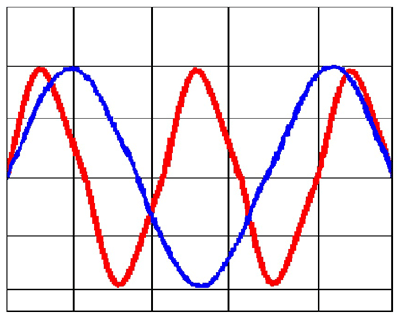Changing the capacitive touch-sensing methodology
Bring the touch functionality of consumer electronics to industrial-grade displays can be highly challenging
BY MARK CAMBRIDGE
CEO
Zytronic
www.zytronic.com
The unbridled success of touch-enabled user interfaces in products such as smartphones, MP3 players, desk top monitors, and tablet computers over the last few years has been driven by the all-round performance and increased availability of projected capacitive touch sensors. Now manufacturers of industrial-grade equipment are keen to bring the same levels of touch functionality to their products with small touch displays.
Achieving this functionality can be highly challenging when using the identical mutual capacitance sensing methodology currently used in consumer devices as the requirements for durability and longevity are often very different and it can be a struggle to deliver the necessary overall robustness required for some applications. An alternative projected capacitive sensing methodology is needed, which enables touchscreens to cope with harsher environmental conditions.
Touch sensor alchemy
A very large proportion of portable consumer touchscreens rely on indium tin oxide (ITO) as their active, conductive element. With its combination of good electrical conductivity and near invisibility when deposited as a thin film, this material has been widely used in display and touchscreen manufacture for many years and is well understood.
ITO’s ready availability has aided the explosive growth of the touchscreen market, with Table 1 testifying to the current size and expected growth in this dynamic market. The combination of performance and availability has resulted in ITO becoming the material of choice for almost all consumer electronic touchscreen applications, initially with resistive, surface-capacitive, and now projected-capacitive touch sensor types.
Although these impressive figures are dominated by the expected continued growth in portable consumer devices, other application areas will inevitably be addressed. Until now, the ability for conventional ITO-based small-format, projected capacitive touchscreens to make inroads into the more demanding, industrial applications has been hampered by the sensing mechanism it relied on.
For all its benefits outperforming both conventional surface capacitive and resistive alternatives mutual capacitive ITO sensors (where the capacitance between two electrodes is measured) exhibit relatively limited through-glass performance. They are typically only capable of reliably detecting touch through overlays that are less than 2 to 3 mm thick, which cannot adequately protect the display from the more exacting physical strains found outside the relatively trouble-free sphere of portable consumer design.
For ITO to make real headway within more demanding industrial applications, the dominant mutual capacitance sensing technique will not always be appropriate. An alternative sensing technique needs to offer the same levels of touch performance and functionality, but simultaneously provide a far greater degree of ruggedness, handling high humidity levels, extremes of temperature, liquid ingress, and exposure to chemicals.
A new perspective
The shortcomings of mutual capacitive screens based on ITO in industrial or other challenging applications can be overcome if, instead of basing the sensing mechanism on mutual capacitance, a self-capacitance approach is used. Self-capacitance touch sensing measures the capacitance of a single electrode to ground, with the field generated by the user inducing alterations in the field around the sensor matrix.

Fig. 1: With the frequency modulation technique used in projected capacitive touch sensing, the frequency of the signal when the finger far from the sensor (red) decreases when the finger is close to the sensor (blue)
Frequency modulation across the ITO electrodes (see Fig. 1 ) in the sensor matrix means that, when the user’s finger approaches the surface of the screen, a change in the waveforms passing through the electrodes can be determined. By measuring where this change is most profound, the position touch event on the x and y axes can be accurately located.
Methodology benefits
Detecting picofarad-level changes in capacitance means this approach is extremely sensitive, and provides the touchscreen with greater dynamic z-axis (depth) touch control. This in turn allows activation to be tuned to respond to the lightest of touches, even through a heavily gloved hand, and through very thick overlays of glass, plastic and similarly non-conductive materials.
The greater through-glass performance of self-capacitance ITO sensors means they are far better suited to heavy duty use. In addition, with suitable touch controllers and application software, gesture recognition and dual touch functionality can be incorporated into a wide range of everyday industrial scenarios.
The benefits derived from ITO touch sensors using self-capacitance will allow small display and portable industrial devices with more robust user interfaces to enter the market. ■
Table.1: Touch module shipment and revenue forecast (2009-2015)
| 2009 | 2010 | 2011 | 2012 | 2013 | 2014 | 2015 | |
| Shipments (million units) | 607 | 800 | 987 | 1,161 | 1,341 | 1,538 | 1,735 |
| Year on year growth (%) | 29.6 | 31.8 | 23.3 | 17.6 | 15.6 | 14.7 | 12.8 |
| Revenue (million $) | 4,332 | 6,177 | 7,646 | 8,900 | 10,146 | 11,331 | 12,432 |
| Year on year growth (%) | 19 | 42.6 | 23.8 | 16.4 | 14.0 | 11.7 | 9.7 |
| Source: 2010 Touch Market Analysis, DisplaySearch | |||||||
Advertisement
Learn more about Zytronic





